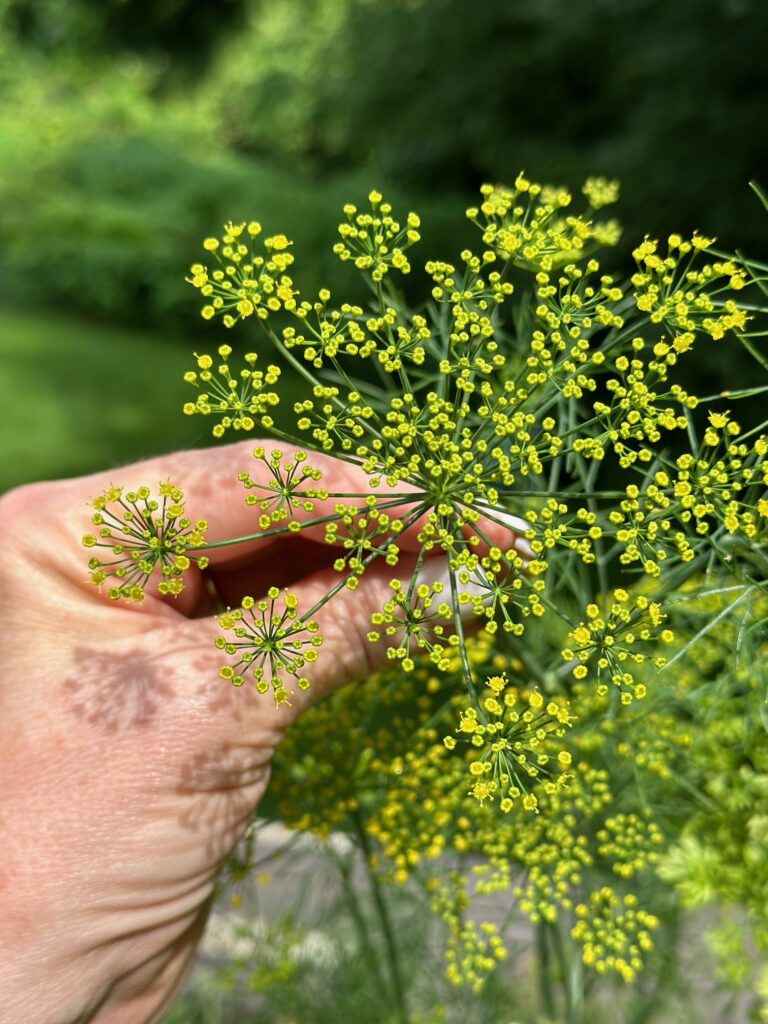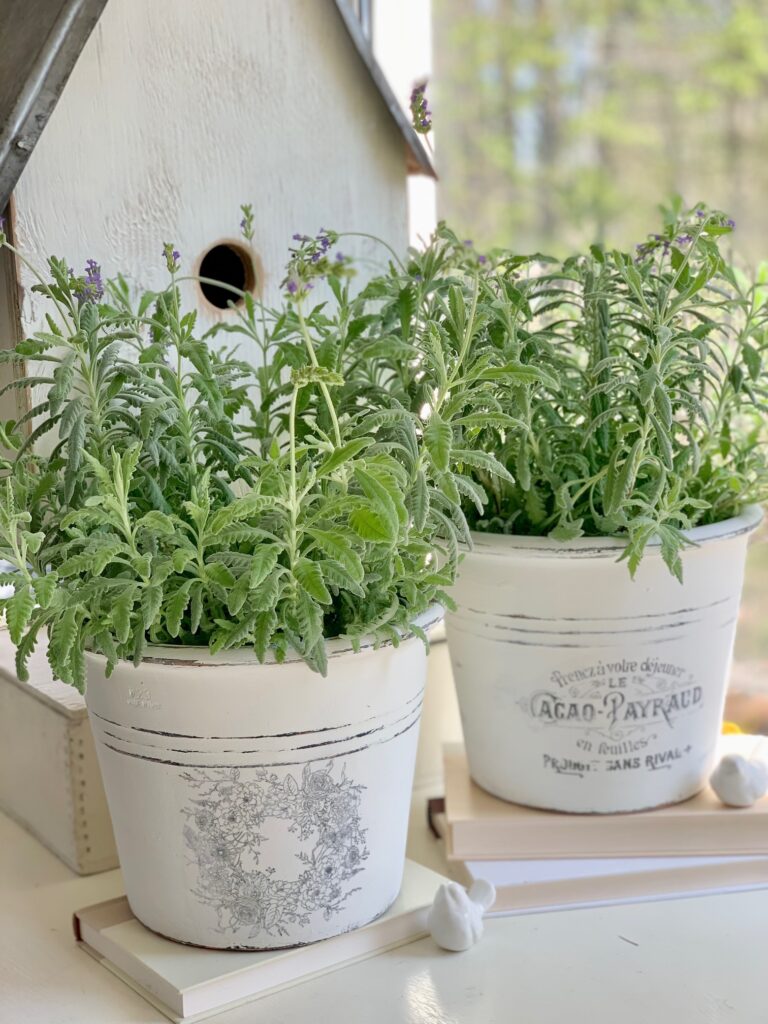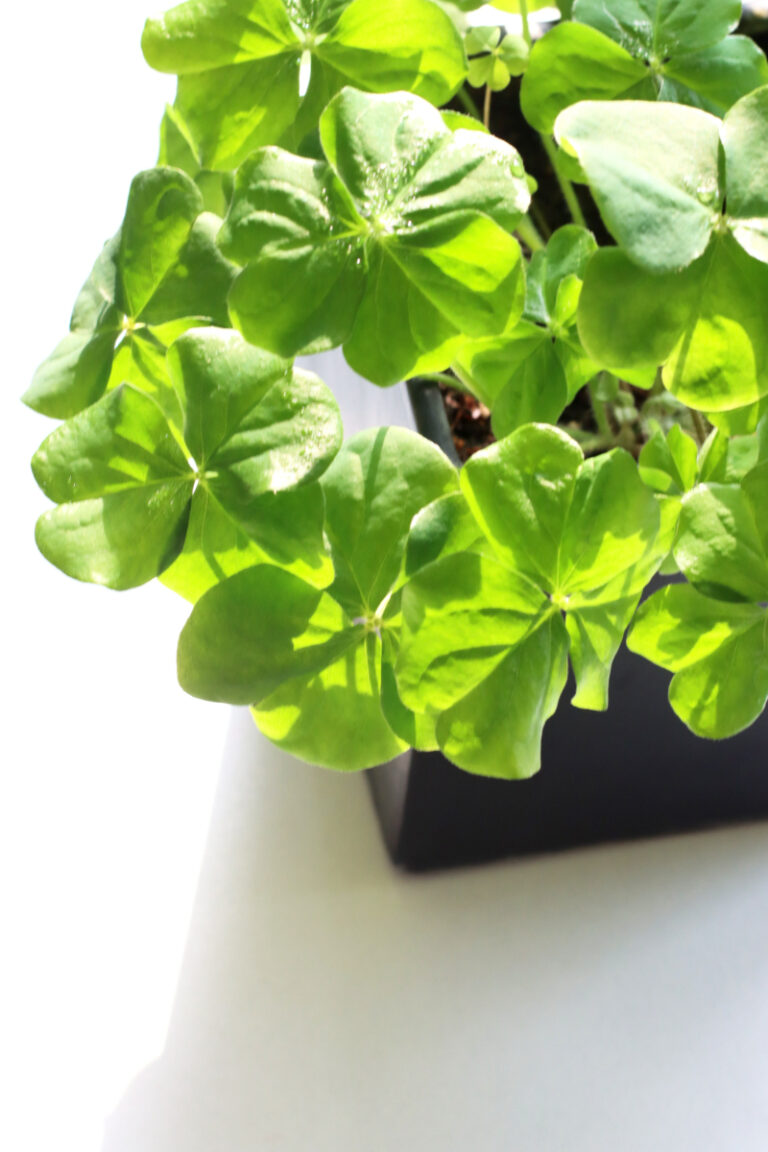Growing Hydroponic Herbs in Mason Jars: A Beginner’s Guide
Growing hydroponic herbs in mason jars is a fun and easy way to bring fresh herbs into your home. Hydroponics is a method of growing plants without soil, using only water and nutrients.
This method allows for faster growth and higher yields compared to traditional soil-based gardening. Plus, growing herbs in mason jars adds a unique touch to your home decor.
Some popular herbs for mason jar hydroponics include basil, mint, chives, parsley, cilantro, thyme, oregano, and rosemary.
You’ll also need mason jars, net pots, hydroton pellets, hydroponic nutrients, and a light source if you don’t have access to natural sunlight.
Key Takeaways
- Hydroponic gardening is a soil-free method of growing plants that allows for faster growth and higher yields.
- Some popular herbs for mason jar hydroponics include basil, mint, chives, parsley, cilantro, thyme, oregano, and rosemary.
- To get started, you’ll need mason jars, net pots, hydroton pellets, hydroponic nutrients, and a light source if you don’t have access to natural sunlight.

Understanding Hydroponics
To get started with mason jar hydroponics, it’s important to have a basic understanding of how the process works.
The advantage of this method is that you don’t need soil. Instead, you use a nutrient-rich solution of water and minerals to provide the plants with all the nourishment they need to grow healthy and strong.
What is Hydroponics?
Hydroponics is a method of growing plants without soil, using a nutrient-rich water solution instead.
In this method, the plants are grown in a controlled environment, such as a greenhouse, and are supplied with the necessary nutrients and water directly to their roots.
Hydroponics is a highly efficient way of growing plants, as the water and nutrients are used more effectively than in traditional soil-based methods.
Benefits of Hydroponics
There are several benefits to using hydroponics to grow herbs, including:
- Higher yields: Hydroponic systems can produce up to 30% more yield than traditional soil-based methods, due to the precise control over the growing conditions.
- Water conservation: Hydroponic systems use up to 90% less water than traditional soil-based methods, as the water is recirculated and reused.
- No soil-borne diseases: Since hydroponic plants are grown in a sterile environment, there is no risk of soil-borne diseases affecting the plants.
- Less space required: Hydroponic systems can be set up in a small space, making them ideal for urban gardening or indoor gardening.
- Faster growth: Plants grown hydroponically tend to grow faster than those grown in soil, due to the constant supply of nutrients and water.
Choosing the Right Herbs
When choosing which herbs to grow in your mason jar hydroponics system, it’s important to consider the size of the jar, the lighting conditions, and the nutrient levels.
Some herbs are better suited for hydroponic growing than others. Here are some factors to keep in mind when selecting herbs for your hydroponic garden.
Best Herbs for Hydroponics
- Basil: Basil is a popular herb that grows well in hydroponics. It requires plenty of light and warm temperatures to thrive. Basil also benefits from nutrient-rich water, so be sure to monitor the nutrient levels in your hydroponic system.
- Mint: Mint is another herb that grows well in hydroponics. It’s a fast-growing plant that can quickly take over your mason jar. Be sure to trim it regularly to prevent it from crowding out other herbs. Mint prefers cooler temperatures and can tolerate lower light levels.
- Chives: Chives are a versatile herb that can be used in many different dishes. They grow well in hydroponics and require moderate light levels. Chives prefer slightly alkaline conditions, so be sure to monitor the pH levels in your hydroponic system.
- Parsley: Parsley is a nutrient-rich herb that grows well in hydroponics. It prefers cooler temperatures and moderate light levels. Parsley can be slow to germinate, so be patient when starting your seeds.
- Cilantro: Cilantro is a popular herb that is used in many different cuisines. It grows well in hydroponics and prefers cooler temperatures. Cilantro can be sensitive to high nutrient levels, so be sure to monitor the nutrient levels in your hydroponic system.
- Thyme: Thyme is a hardy herb that can tolerate a wide range of growing conditions. It prefers moderate light levels and slightly alkaline conditions. Thyme can be slow to germinate, so be patient when starting your seeds.

Materials Needed
To grow hydroponic herbs in mason jars, you will need a few basic supplies. Here are the materials you will need:
Mason Jars
The first thing you will need is a set of mason jars. Any size will work, but quart-sized jars are a popular choice.
You can purchase mason jars at most grocery stores, hardware stores, or online. You can also reuse old jars that you have lying around the house.
Growth Medium
To grow herbs hydroponically, you will need a growth medium that provides support for the plants’ roots.
Some popular options include clay pebbles, perlite, and coconut coir. You can purchase these materials at a hydroponic supply store or online.
Nutrient Solution
In hydroponic gardening, plants do not receive nutrients from soil. Instead, they receive their nutrients from a nutrient solution that is added to the water.
You can purchase pre-made nutrient solutions or make your own using fertilizer salts. Be sure to follow the instructions carefully to avoid over or under-fertilizing your plants.
Light Source
Finally, you will need a light source to provide your plants with the energy they need to grow. You can use natural sunlight or a grow light.
If you choose to use a grow light, be sure to select one that is appropriate for the size of your garden and the type of plants you are growing.
Setting Up Your Mason Jar Hydroponic System
Now that you have all the materials you need, it’s time to set up your hydroponic system in the mason jars. Here are the steps you need to follow:
- Clean your mason jars thoroughly to ensure that there are no contaminants that could harm your plants.
- Paint the jars with black paint or wrap them in black fabric to prevent light from entering the jars. This will help prevent algae growth and keep the roots of your plants healthy.
- Fill the jars with water until they are about three-quarters full. You can add liquid nutrients to the water at this point, following the instructions on the package.
- Place the net pots on top of the jars, making sure they fit snugly. The net pots will hold your growing medium and plants.
- Fill the net pots with your chosen growing medium, such as rockwool or coconut coir.
- Add your seedlings to the growing medium, making sure they are securely in place.
- Place the jars in a location with plenty of natural light, but not in direct sunlight. You can also use grow lights if natural light is not available.
It’s important to monitor your hydroponic system regularly to ensure that your plants are growing well.
Check the water level in the jars every few days and top up as necessary. Also, check the pH level of the water and adjust it if needed to ensure that your plants are getting the right nutrients.

Planting the Herbs
Once you have prepared your mason jars and filled them with the hydroponic medium, it’s time to plant your herbs. Here’s how to do it:
- Start by gently placing the herb seedlings into the net pots. Be sure to handle them carefully to avoid damaging the delicate roots.
- Once the seedlings are in the net pots, fill the pots with the hydroponic medium, making sure to cover the roots completely.
- Place the net pots into the mason jars, positioning them so that the top of the net pot is just above the water level.
- Cover the top of the mason jar with a piece of black fabric or paint it black to prevent algae growth.
- Finally, add the hydroponic nutrients to the water according to the instructions on the package. Be sure to monitor the pH levels regularly to ensure that they are within the optimal range for your chosen herbs.
It’s important to note that different herbs have different requirements, so it’s a good idea to do some research on the specific herbs you plan to grow.
For example, basil prefers warm temperatures and lots of light, while mint prefers cooler temperatures and partial shade.
Maintaining Your Hydroponic Herbs
Growing hydroponic herbs in mason jars is an easy and fun way to bring fresh herbs into your home.
However, it’s important to properly maintain your herbs to ensure they grow healthy and strong. Here are some tips on how to maintain your hydroponic herbs.
Watering
Hydroponic herbs require regular watering to thrive. It’s important to check the water level in your mason jars every day and add more water as needed.
Make sure the water level is always touching the bottom of the net pot, but not completely covering it.
If the water in your jars becomes cloudy or starts to smell, it’s time to change it. Drain the old water and refill the jars with fresh water and nutrients.
Lighting
Light is essential for the growth of your hydroponic herbs. Place your mason jars in a location that receives plenty of natural light, such as a windowsill. If natural light is not available, you can use artificial grow lights.
Make sure to provide your herbs with at least 12 hours of light per day. You can use a timer to automate the lighting schedule and ensure your herbs receive consistent light.
Nutrient Management
Hydroponic herbs require a balanced nutrient solution to grow properly. You can purchase pre-made nutrient solutions or make your own using a hydroponic nutrient mix.
It’s important to monitor the pH level of your nutrient solution regularly. The optimal pH range for hydroponic herbs is between 5.5 and 6.5. If the pH level is too high or too low, it can affect the absorption of nutrients by the plant.
In addition, make sure to change the nutrient solution in your mason jars every two to three weeks to prevent the buildup of salts and minerals.

Harvesting Your Herbs
One of the best things about growing your own herbs is being able to harvest them when they are fresh and at their peak flavor. Here are some tips to help you harvest your hydroponic herbs in mason jars:
- Harvest in the morning: The best time to harvest your herbs is in the morning, after the dew has dried but before the sun gets too hot. This is when the essential oils in the leaves are at their highest concentration, which means the best flavor.
- Use sharp scissors: When harvesting your herbs, use sharp scissors to snip off the stems. This will help prevent damage to the plant and ensure a clean cut.
- Harvest frequently: The more you harvest your herbs, the more they will grow. So, don’t be afraid to harvest frequently, especially if you plan on using them in your cooking.
- Don’t harvest too much at once: While it’s tempting to harvest all your herbs at once, it’s best to only take what you need. This will allow the plant to continue growing and producing more leaves.
- Store your herbs properly: After harvesting, store your herbs in a plastic bag in the refrigerator. This will help keep them fresh and flavorful for up to a week.
Troubleshooting Common Problems
Growing hydroponic herbs in mason jars can be a fun and rewarding experience, but it’s not without its challenges. Here are some common problems you might encounter and how to troubleshoot them.
Algae Growth
Algae growth is a common problem in hydroponic systems and can be caused by too much light or nutrients. Algae can compete with your plants for nutrients and light, which can stunt their growth.
Solution: To prevent algae growth, cover your mason jars with a dark fabric or paint them black. This will help to block out light and prevent algae from growing. You can also reduce the amount of nutrients in your solution to limit algae growth.
Root Rot
Root rot is a fungal disease that can affect hydroponic plants. It’s caused by overwatering or poor drainage, which can lead to oxygen deprivation and root suffocation.
Solution: To prevent root rot, make sure your mason jars have adequate drainage. You can add a layer of pebbles or rocks at the bottom of your jar to help with drainage. Also, avoid overwatering your plants and make sure your solution is well-aerated.
Nutrient Imbalance
Nutrient imbalances can cause your plants to grow poorly or even die. Too much or too little of certain nutrients can cause a range of problems, from yellowing leaves to stunted growth.
Solution: Monitor your nutrient levels regularly and adjust your solution as needed. You can also use a pH meter to ensure that your solution is at the correct pH level for your plants.
Pests
Pests can be a problem in any type of gardening, and hydroponic gardening is no exception. Common pests include aphids, spider mites, and whiteflies.
Solution: You can use natural pest control methods like neem oil or insecticidal soap to control pests in your hydroponic system. You can also introduce beneficial insects like ladybugs or lacewings to help control pest populations.
By troubleshooting these common problems, you can ensure that your hydroponic herb garden in mason jars thrives.

Frequently Asked Questions
As usual, here are some frequently asked questions about growing hydroponic herbs in mason jars.
Q: How do you grow herbs in mason jars with water?
A: To grow herbs in mason jars with water, you’ll need a hydroponic setup. This involves setting up net pots filled with clay pellets, suspending the net pots inside your mason jars with string or wire, and then filling the jars with a nutrient-rich solution.
Then, place your mason jars in an area that receives plenty of light and monitor the water levels and nutrient solution regularly.
Q: How often should I change the water in my mason jars?
A: It’s important to change the water in your mason jars every two to three weeks. This will help prevent the buildup of salts and minerals, which can be harmful to your hydroponic herbs.
Make sure you use a fresh nutrient-rich solution when replacing the water to keep your plants healthy and thriving.
Q: What is the best hydroponic method for herbs?
A: The best hydroponic method for herbs is the Deep Water Culture (DWC) system, also known as the Reservoir Method.
This involves suspending your plants in individual net pots that are placed inside large reservoirs filled with a nutrient-rich solution.
This method is simple and effective, making it ideal for growing a variety of herbs. Plus, it’s relatively easy to maintain and is great for beginner gardeners.
Q: What are expensive herbs that can be grown in a hydroponic system?
A: Some of the more expensive herbs to grow in a hydroponic system include oregano, tarragon, sage, and rosemary.
These herbs are highly prized for their flavor and aroma, making them great candidates for growing in a hydroponic system. Plus, they don’t require too much maintenance or special care to thrive.
Q: Can I use rainwater to fill my mason jars?
A: Yes, you can use rainwater to fill your mason jars. However, it’s important to make sure that the water is clean and free from pollutants before you use it in your hydroponic system.
You should also test for pH levels and add nutrients as necessary to ensure your plants receive the proper balance of nutrients.
Thank you for visiting the blog today! Please let me know if you have any questions!







